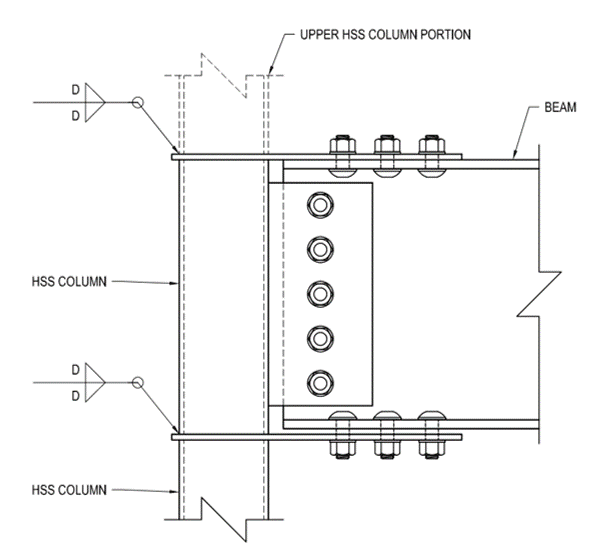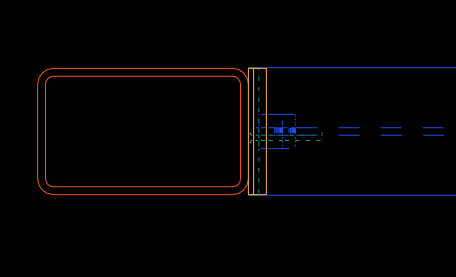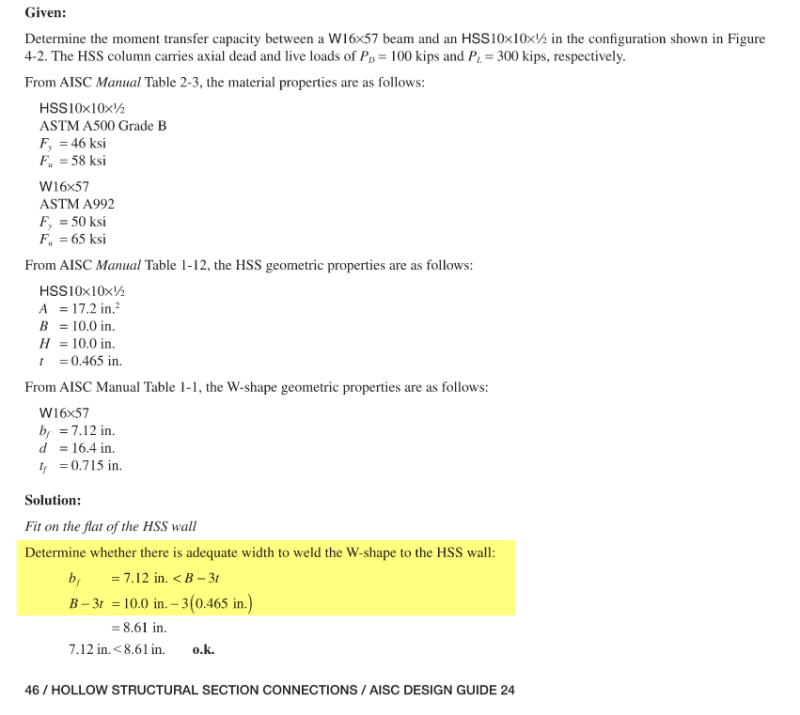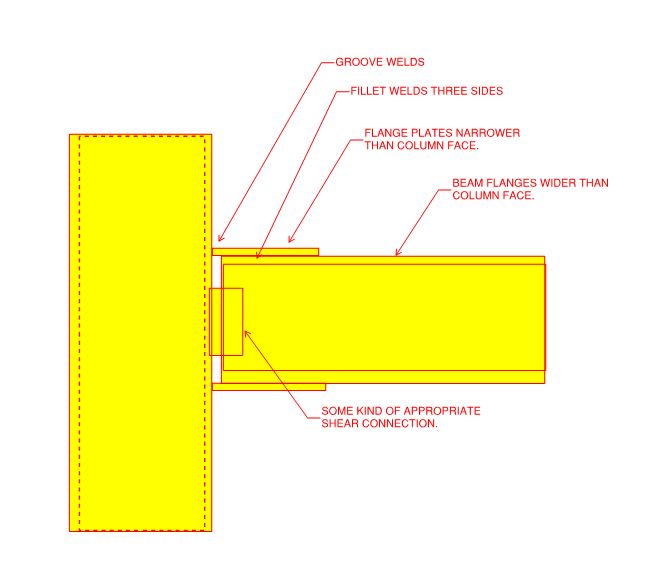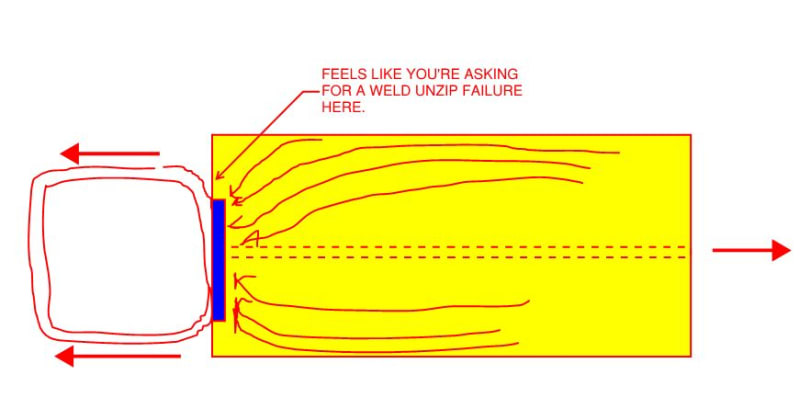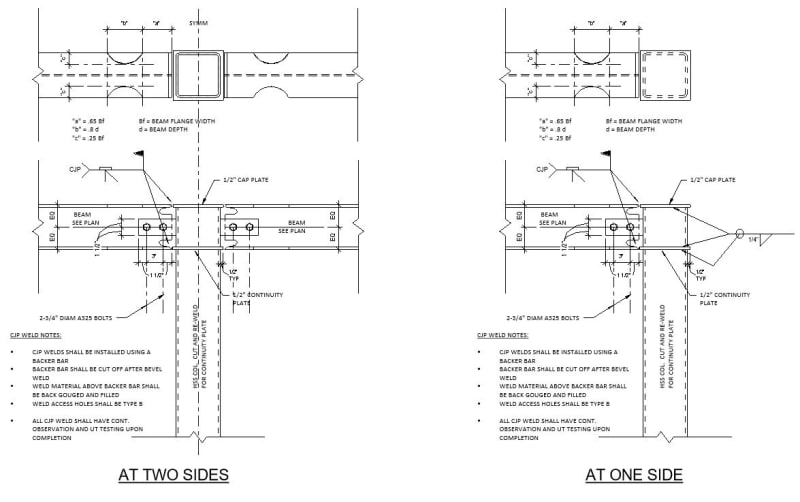Ben29
Structural
- Aug 7, 2014
- 324
I want to do a moment connection of a wide flange beam to an HSS column whereby the beam flange is 6" wide and the workable flat of the HSS column is only 4 1/2" wide. The moment is relatively small (50 FT-K).
Design Guide 24 suggests that the workable gauge of the HSS must match the beam flange width for the Directly Welded Flange Moment Connection. But if I can develop the moment using only the 4 1/2" flange connectivity, am I OK?
Design Guide 24 suggests that the workable gauge of the HSS must match the beam flange width for the Directly Welded Flange Moment Connection. But if I can develop the moment using only the 4 1/2" flange connectivity, am I OK?

